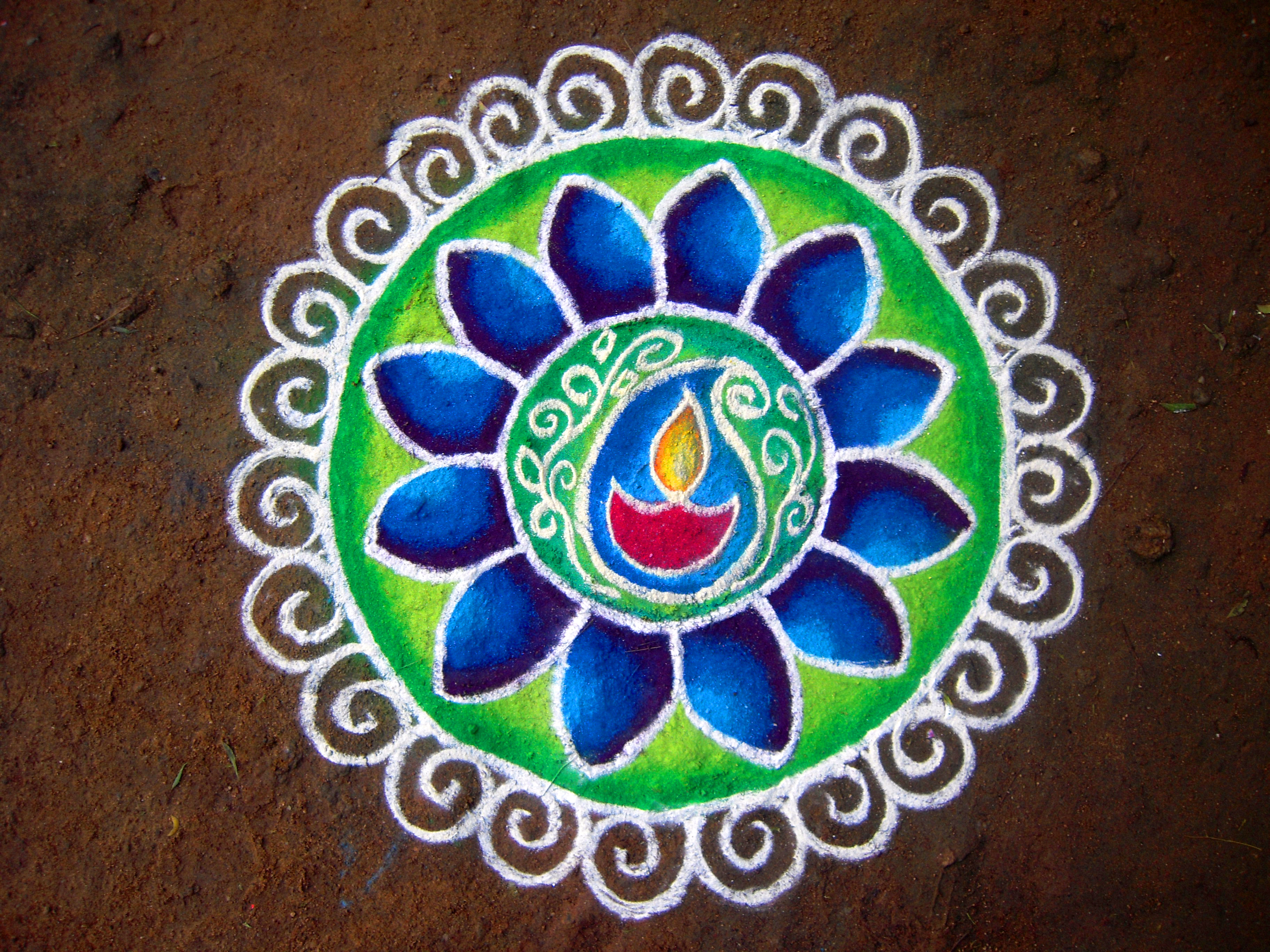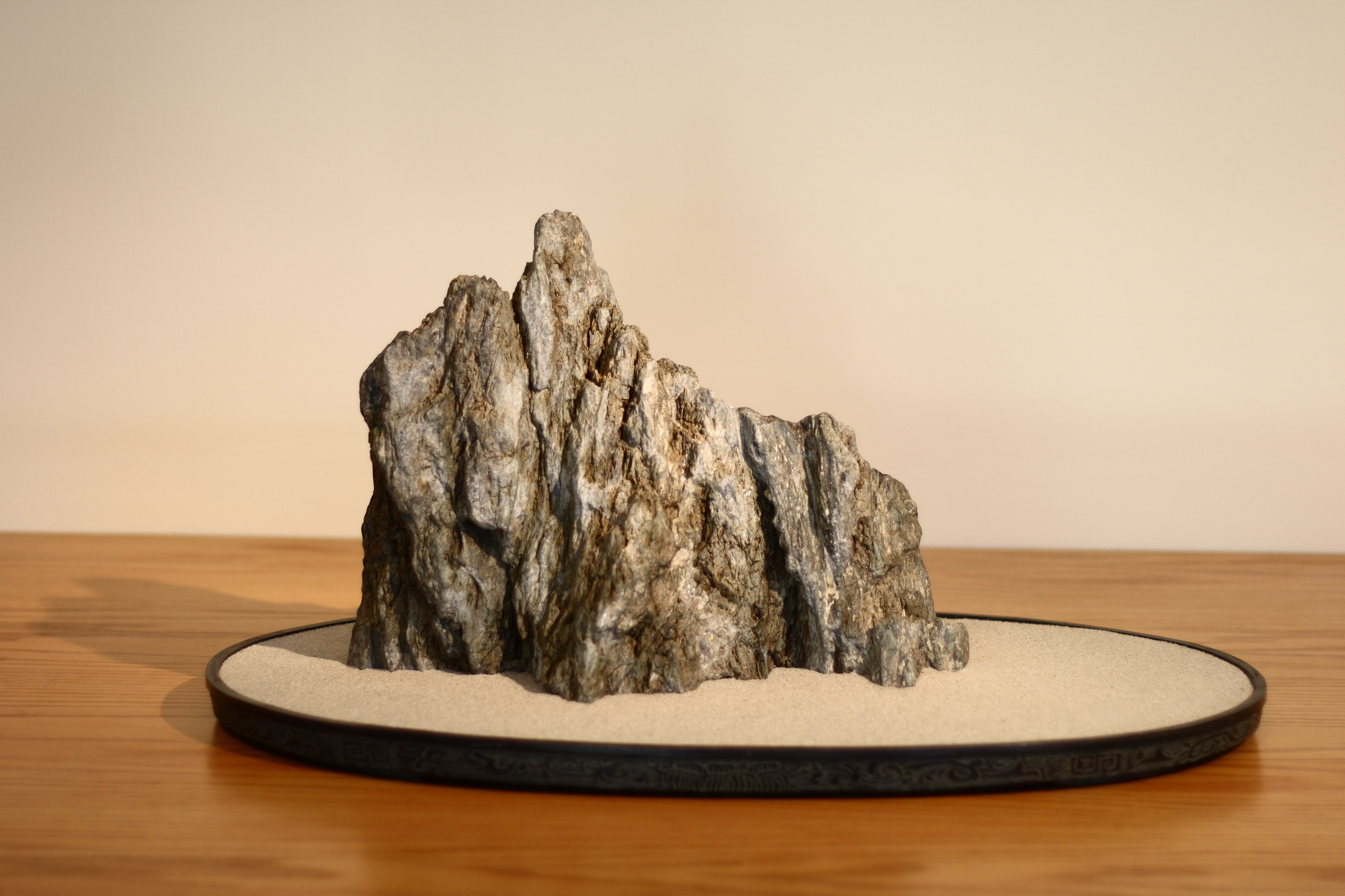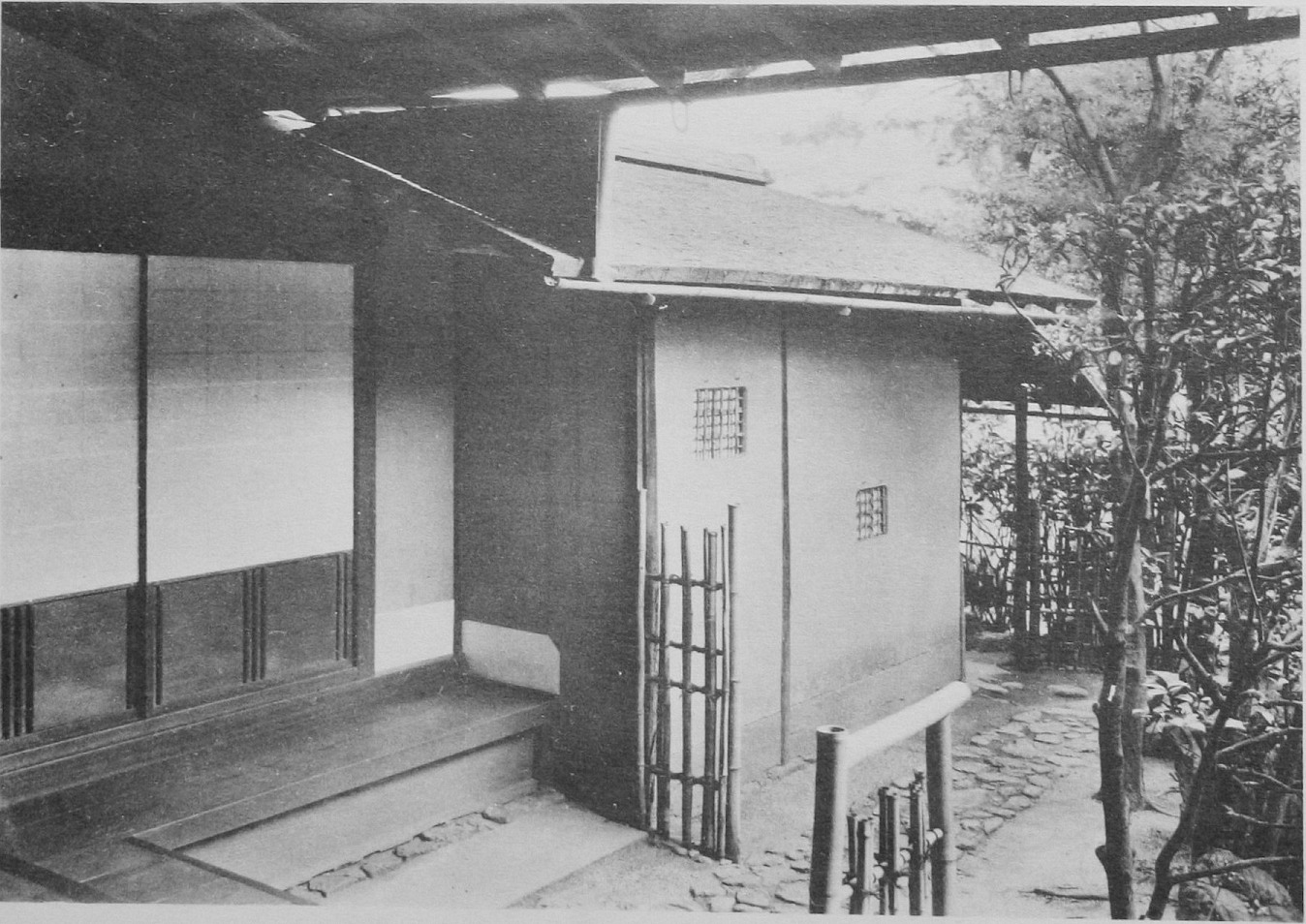|
Bonseki
''Bonseki'' (, "tray rocks") is the ancient Japanese art of creating miniature landscapes on black trays using white sand, pebbles, and small rocks. Small delicate tools are used in Bonseki such as feathers, small flax brooms, sifters, spoons and wood wedges. The trays are either oval or rectangular, measuring about 60 by 35 centimeters in size. Oval trays have a low rim while rectangular ones are flat. Bonseki scenes often depict mountains, seashores, and gardens. Small stones are used to represent mountains, shore lines or rocky islands that waves break upon. Miniature structures, usually of painted copper, are sometimes added to the work to make houses, temples, bridges, and the like. Bonseki scenes by design are generally meant to only be temporary. Sometimes, by using special methods, a Bonseki scene can be preserved. This is called either ''bonga'' ("tray picture") or ''suna-e'' ("sand picture"). History The origins of Bonseki are unclear but it is believed Emperor ... [...More Info...] [...Related Items...] OR: [Wikipedia] [Google] [Baidu] |
Bonseki Artist At Work
''Bonseki'' (, "tray rocks") is the ancient Japanese art of creating miniature landscapes on black trays using white sand, pebbles, and small rocks. Small delicate tools are used in Bonseki such as feathers, small flax brooms, sifters, spoons and wood wedges. The trays are either oval or rectangular, measuring about 60 by 35 centimeters in size. Oval trays have a low rim while rectangular ones are flat. Bonseki scenes often depict mountains, seashores, and gardens. Small stones are used to represent mountains, shore lines or rocky islands that waves break upon. Miniature structures, usually of painted copper, are sometimes added to the work to make houses, temples, bridges, and the like. Bonseki scenes by design are generally meant to only be temporary. Sometimes, by using special methods, a Bonseki scene can be preserved. This is called either ''bonga'' ("tray picture") or ''suna-e'' ("sand picture"). History The origins of Bonseki are unclear but it is believed Emperor ... [...More Info...] [...Related Items...] OR: [Wikipedia] [Google] [Baidu] |
Sandpainting
Sandpainting is the art of pouring coloured sands, and powdered pigments from minerals or crystals, or pigments from other natural or synthetic sources onto a surface to make a fixed or unfixed sand painting. Unfixed sand paintings have a long established cultural history in numerous social groupings around the globe, and are often temporary, ritual paintings prepared for religious or healing ceremonies. This form of art is also referred to as drypainting. Drypainting is practised by Native Americans in the Southwestern United States, by Tibetan and Buddhist monks, as well as Indigenous Australians, and also by Latin Americans on certain Christian holy days. History Native American sandpainting In the sandpainting of southwestern Native Americans (the most famous of which are the Navajo nown as the Diné, the Medicine Man (or ''Hatałii'') paints loosely upon the ground of a hogan, where the ceremony takes place, or on a buckskin or cloth tarpaulin, by letting the colou ... [...More Info...] [...Related Items...] OR: [Wikipedia] [Google] [Baidu] |
Suiseki
In traditional Japanese culture, are small naturally occurring or shaped rocks which are appreciated for their aesthetic or decorative value. They are similar to Chinese scholar's rocks.Cousins, Craig. (2006) ''Bonsai Master Class,'' p. 244 History Chinese scholar's rocks called ''gongshi'' influenced the development of ''suiseki'' in Japan. The history of ''suiseki'' in Japan begins during the reign of Empress Suiko. The small objects were brought to Japan as gifts from the Chinese Imperial court. ''Suiseki'' are usually presented in two different ways: *The stone is provided with a wooden base (''daiza''). *The stone is placed in a waterproof tray or bowl of ceramic (''suiban'') or bronze (''doban''). These stones are not just any stones which can be found in nature; they must be expressive stones and have a special shape, color and texture to be categorized as ''suiseki''. There is a distinction between landscape and object stones. The former reflect landscapes such as ... [...More Info...] [...Related Items...] OR: [Wikipedia] [Google] [Baidu] |
:Category:Japanese Words And Phrases ...
{{Commons Words and phrases by language Words Words Words A word is a basic element of language that carries an objective or practical meaning, can be used on its own, and is uninterruptible. Despite the fact that language speakers often have an intuitive grasp of what a word is, there is no consen ... [...More Info...] [...Related Items...] OR: [Wikipedia] [Google] [Baidu] |
Hosokawa Sansai
was a Japanese samurai warrior of the late Sengoku period and early Edo period. He was the son of Hosokawa Fujitaka with Numata Jakō, and he was the husband of a famous Christian convert (Kirishitan), Hosokawa Gracia. For most of his life, he went under the name of Nagaoka Tadaoki that had been adopted by his father and was related to a town that was in their domain. Shortly after the victory at Sekigahara, Nagaoka Tadaoki reverted to his original name Hosokawa Tadaoki. Biography Tadaoki was the eldest son of Hosokawa Fujitaka. Nussbaum, Louis-Frédéric. (2005)"Hosokawa Tadaoki"in ''Japan Encyclopedia'', p. 359. He fought in his first battle at the age of 15. In that battle, he was in the service of Oda Nobunaga. His childhood name was Kumachiyo (熊千代). Tadaoki was given the Province of Tango in 1580. Soon after that, he married Hosokawa Gracia, the daughter of Akechi Mitsuhide. In 1582, Akechi Mitsuhide rebelled against Nobunaga and Nobunaga was killed. Akechi turne ... [...More Info...] [...Related Items...] OR: [Wikipedia] [Google] [Baidu] |
Rectangular Tray Depicting Miyajima Shrine
In Euclidean plane geometry, a rectangle is a quadrilateral with four right angles. It can also be defined as: an equiangular quadrilateral, since equiangular means that all of its angles are equal (360°/4 = 90°); or a parallelogram containing a right angle. A rectangle with four sides of equal length is a ''square''. The term "oblong" is occasionally used to refer to a non-square rectangle. A rectangle with vertices ''ABCD'' would be denoted as . The word rectangle comes from the Latin ''rectangulus'', which is a combination of ''rectus'' (as an adjective, right, proper) and ''angulus'' (angle). A crossed rectangle is a crossed (self-intersecting) quadrilateral which consists of two opposite sides of a rectangle along with the two diagonals (therefore only two sides are parallel). It is a special case of an antiparallelogram, and its angles are not right angles and not all equal, though opposite angles are equal. Other geometries, such as spherical, elliptic, and hyperbolic ... [...More Info...] [...Related Items...] OR: [Wikipedia] [Google] [Baidu] |
Tokyo
Tokyo (; ja, 東京, , ), officially the Tokyo Metropolis ( ja, 東京都, label=none, ), is the capital and largest city of Japan. Formerly known as Edo, its metropolitan area () is the most populous in the world, with an estimated 37.468 million residents ; the city proper has a population of 13.99 million people. Located at the head of Tokyo Bay, the prefecture forms part of the Kantō region on the central coast of Honshu, Japan's largest island. Tokyo serves as Japan's economic center and is the seat of both the Japanese government and the Emperor of Japan. Originally a fishing village named Edo, the city became politically prominent in 1603, when it became the seat of the Tokugawa shogunate. By the mid-18th century, Edo was one of the most populous cities in the world with a population of over one million people. Following the Meiji Restoration of 1868, the imperial capital in Kyoto was moved to Edo, which was renamed "Tokyo" (). Tokyo was devastate ... [...More Info...] [...Related Items...] OR: [Wikipedia] [Google] [Baidu] |
Edo Period
The or is the period between 1603 and 1867 in the history of Japan, when Japan was under the rule of the Tokugawa shogunate and the country's 300 regional '' daimyo''. Emerging from the chaos of the Sengoku period, the Edo period was characterized by economic growth, strict social order, isolationist foreign policies, a stable population, perpetual peace, and popular enjoyment of arts and culture. The period derives its name from Edo (now Tokyo), where on March 24, 1603, the shogunate was officially established by Tokugawa Ieyasu. The period came to an end with the Meiji Restoration and the Boshin War, which restored imperial rule to Japan. Consolidation of the shogunate The Edo period or Tokugawa period is the period between 1603 and 1867 in the history of Japan, when Japan was under the rule of the Tokugawa shogunate and the country's regional '' daimyo''. A revolution took place from the time of the Kamakura shogunate, which existed with the Tennō's court, to the Tok ... [...More Info...] [...Related Items...] OR: [Wikipedia] [Google] [Baidu] |
Sen No Rikyū
, also known simply as Rikyū, is considered the historical figure with the most profound influence on ''chanoyu,'' the Japanese "Way of Tea", particularly the tradition of '' wabi-cha''. He was also the first to emphasize several key aspects of the ceremony, including rustic simplicity, directness of approach and honesty of self. Originating from the Sengoku period and the Azuchi–Momoyama period, these aspects of the tea ceremony persist. Rikyū is known by many names; for consistency, he will be referred to as Rikyū in this article. There are three ''iemoto'' (''sōke''), or 'head houses' of the Japanese Way of Tea, that are directly descended from Rikyū: the Omotesenke, Urasenke, and Mushakōjisenke, all three of which are dedicated to passing forward the teachings of their mutual family founder, Rikyū. Early life Rikyū was born in Sakai in present-day Osaka Prefecture. His father was a warehouse owner named , who later in life also used the family name Sen, and his ... [...More Info...] [...Related Items...] OR: [Wikipedia] [Google] [Baidu] |
Tea Ceremony
An East Asian tea ceremony, or ''Chádào'' (), or ''Dado'' ( ko, 다도 (茶道)), is a ceremonially ritualized form of making tea (茶 ''cha'') practiced in East Asia by the Chinese, Japanese, and Koreans. The tea ceremony (), literally translated as either "''way of tea''", "''etiquette for tea or tea rite''", or "''art of tea''" in any of the three East Asian languages, is a cultural activity involving the ceremonial preparation and presentation of tea. The Japanese tea ceremony and Korean tea ceremony were influenced by the Chinese tea culture during ancient and medieval times, starting in the 9th century when tea was first introduced to Japan and Korea from China. One can also refer to the whole set of rituals, tools, gestures, etc. used in such ceremonies as tea culture. All of these tea ceremonies and rituals contain "an adoration of the beautiful among the sordid facts of everyday life", as well as refinement, an inner spiritual content, humility, restraint and simplicity ... [...More Info...] [...Related Items...] OR: [Wikipedia] [Google] [Baidu] |
Ashikaga Yoshimasa
Ashikaga (足利) may refer to: * Ashikaga clan (足利氏 ''Ashikaga-shi''), a Japanese samurai clan descended from the Minamoto clan; and that formed the basis of the eponymous shogunate ** Ashikaga shogunate (足利幕府 ''Ashikaga bakufu''), a Japanese shōgun dynasty *** Ashikaga era (足利時代 ''Ashikaga jidai''), a period of Japanese history related to the eponymous dynasty * Ashikaga clan (Fujiwara) (足利氏 ''Ashikaga-shi''), a Japanese samurai clan descended from the Fujiwara clan * Ashikaga, Tochigi (足利市 ''Ashikaga-shi''), a city in Japan ** Ashikaga Station (足利駅 ''Ashikaga eki''), a train station in the city of Ashikaga ** Ashikaga District, Tochigi (足利郡), a former district located in Tochigi ** Ashikaga Junior College (足利短期大学 ''Ashikaga tanki daigaku''), a school in the city of Ashikaga ** Ashikaga Institute of Technology (足利工業大学 ''Ashikaga kogyō daigaku''), a school in the city of Ashikaga ** Ashikaga murder case, a murde ... [...More Info...] [...Related Items...] OR: [Wikipedia] [Google] [Baidu] |





